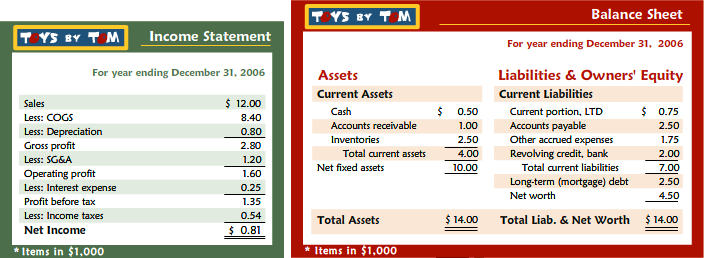Home » Online Coursework Help » Online Exam Help » Harvard Finance Introductory Section Final Exam 2
Harvard Finance Introductory Section Final Exam 2
Q1. Operating cash flow is generated by a company’s daily operations related to production and sales of goods and/or services. True / False
Q2. Selecting investment projects according to rules based either on project NPV or IRR results in maximizing firm value. True / False
Q3. Which items are necessary in calculating the net present value of a project?
I. Investment outlays
II. Discount rate
III. Incremental cash flow
IV. Time period for the project
- I, II and IV
- I, II and III
- II, III and IV
- All of the above
Q4. Suppose a riskless project requires an initial investment of $10 and will generate a one-time cash inflow of $30 two years later. Assuming a risk-free interest rate of 5%, which of the following statements about the project is NOT true?
- The net present value of the project is positive
- The IRR is greater than 50 percent.
- The accounting rate of return on the project is positive
- The payback period is less than 2 years.
Q5. How is the cash conversion cycle calculated?
- Days in Inventory + Collection Period
- Days in Inventory – Payables Period
- Days in Inventory + Collection Period – Payables Period
- None of the above
Q6. A company can shorten its cash cycle by:
- Reducing inventory turnover
- Reducing account payables
- Reducing days receivable
- None of the above
Q7. Leverage and liquidity generally rise or fall together. True / False
Q8. Analysis of a company’s financial statements:

Below are simplified versions of the balance sheet and income statement for Toys by Tom, Inc. Use this information to answer the following question.
What is Toys by Tom, Inc. return on assets (ROA)?
- 6.9
- 0.86
- 18
- 1.2
Q9. Compute the net present value of an investment with 5 years of annual cash inflows of $100 and two cash outflows, one today of $100 and one at the beginning of the second year of $50. Use a discount rate of 10 percent
- $229.08
- $287.60
- $233.62
- $271.53
Q10. Analysis of a company’s financial statements:

Below are simplified versions of the balance sheet and income statement for Toys by Tom, Inc. Use this information to answer the following question.
Toys by Tom, Inc. has a current ratio of ____, suggesting ________.
- 9.6; reasonable ability to cover interest expense
- 0.57; potential illiquidity
- 0.21; potential collection problems
- 1.75; reasonable liquidity
Q11. An increase in financial leverage generally results in a higher return on equity (ROE). True / False
Q12. Which of the following ratios uses sales in the denominator?
- Days in inventory
- Receivables turnover
- cash ratio
- Average collection period
Q13. Biases can and should always be eliminated in financial forecasts. True / False
Q14. What is the present value of a perpetuity of $100 given a discount rate of 5%?
- $2,000
- $3,000
- $1,500
- $500
Q15. The NPV rule, which says companies should invest in projects for which NPV is greater than 0, depends on the assumption of value maximization.
Q16. For a levered firm, EBIT is equivalent to:
- Net income
- Pro forma earnings
- Operating profit
- Net income before taxes
Q17. A dollar today is worth more than a dollar tomorrow. True / False
Q18. In general, the reduction of an asset is a source of funds. True / False
Q19. Scenario analysis is a way of testing forecasts by changing one assumption at a time. True / False
Q20. The amount by which a project increases the value of the firm is given by the project’s ______.
- accounting rate of return
- net present value (NPV)
- internal rate of return (IRR)
- present value
Q21. Which of the following is commonly used in preparing pro forma statements:
- Historical financial statements
- Projected sales
- Efficiency ratios
- All of the above
Q22. If you invest $2,000 today for three years at 5% interest paid annually, you will earn a total of $______ in interest. Assume you re-invest all interest.
- 205.00
- 300.00
- 315.25
- 500.00
Q23. A company has a retention rate of 50%, sales of $25,000, beginning equity of $50,000 and profit margins of 10%, an asset turnover ratio of .75 and debt of $10,000. What is its sustainable growth rate?
- 2.5%
- 1.7%
- 3.75%
- Not enough information given
Q24. The sustainable growth rate is the maximum growth rate achievable over an extended period of time. True / False
Q25. A firm has $100 of average inventory, operating profit of $500 and sales of $1,500. What will be its days in inventory?
- 36.5 days
- 24.3 days
- 73.0 days
- Not enough information
Q26. What are pro forma statements?
- Summaries of historical financial statements
- Government-mandated analyses of financial statements
- projected statements used in financial planning
- Estimated tax liabilities
Q27. Common-size financial statements are constructed in order to:
- Adjust for inflation and risk
- Facilitate comparisons of different-sized companies
- To comply with SEC requirements
- All of the above
Q28. For which of the following generic businesses would you expect a combination of high asset turnover and low profit margins?
- Supermarkets
- Banks
- Software developers
- Airlines
Q29. It is possible for a company to grow faster than its sustainable growth rate. True / False
To get all correct answers, please click on Pay Now to make a payment of $40. We accept payments via PayPal only. In description, please write the exam name – Harvard Finance Introductory Section Final Exam 2. We will email the answers at your email id within 30 minutes.
